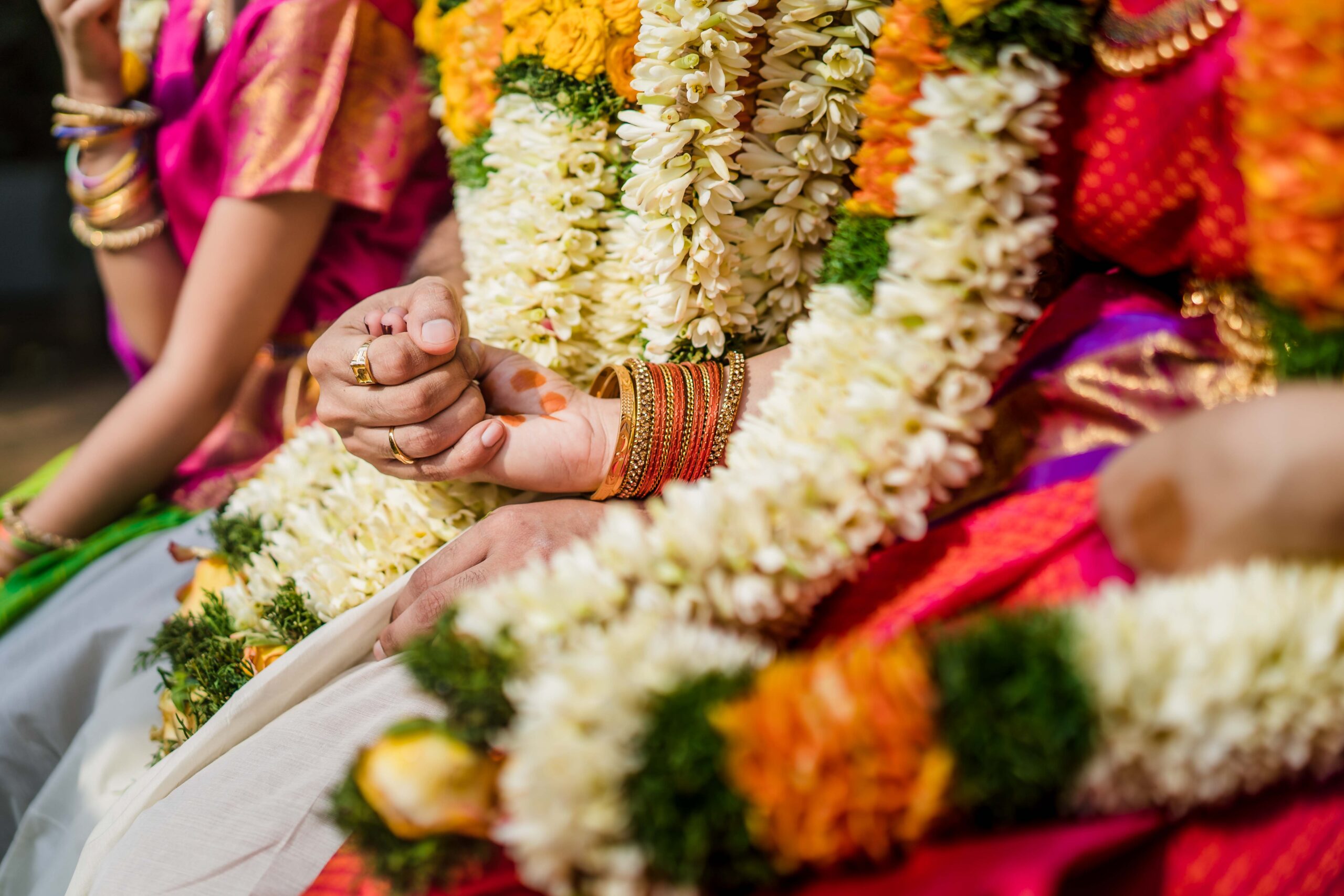
Vedic weddings are ancient, sacred ceremonies deeply rooted in Hindu traditions and scriptures. These weddings are rich with rituals, symbolism, and spiritual significance, drawing from the Vedas, the oldest sacred texts of Hinduism. Here, we explore the essence of Vedic weddings, their key components, and what makes them a profound celebration of love and commitment.
The Essence of Vedic Weddings
Vedic weddings are not just about the union of two individuals; they symbolize the merging of two families, communities, and even cosmic energies. They are performed according to Vedic scriptures. The rituals are designed to invoke blessings from deities, ensure the prosperity and well-being of the couple, and maintain cosmic harmony. Understanding the significance of Vedic wedding ceremonies and the symbolism of Vedic wedding rituals can enhance the experience for everyone involved.
Key Rituals and Ceremonies
Pre-Wedding Rituals Of A Vedic Wedding
∙Engagement / Roka / Nischayadartham Ceremony :
Marks the formal agreement of the marriage between the two families which is sealed in the presence of close family.
∙Mehendi Ceremony:
The bride’s hands and feet are adorned with intricate henna designs, symbolizing beauty, joy, and auspiciousness. This is a crucial step in the pre- wedding rituals in Vedic traditions.
∙Haldi Ceremony:
Turmeric paste is applied to the bride and groom to purify and beautify them.
Wedding Day Rituals Of A Vedic Wedding
∙Ganesh Puja:
The ceremony begins with prayers to Lord Ganesha to remove obstacles and bring good fortune.
∙Kanya Agamana:
The arrival of the bride, often accompanied by her brothers or uncles.
∙Jaimala/Garland Exchange:
The bride and groom exchange floral garlands, signifying acceptance of each other.
Main Wedding Rituals Of A Vedic Wedding
∙Kanyadaan:
The giving away of the bride by her father, a deeply emotional and spiritual act symbolizing the transfer of responsibility. Understanding the importance of Kanyadaan in Vedic weddings adds depth to this ritual.
∙Vivah Homa:
The sacred fire ceremony, where the couple offers prayers and sacrifices to Agni, the fire god, as a witness to their union. The significance of the sacred fire in Vedic weddings cannot be overstated, as it symbolizes purity, light, and the divine presence.
∙Mangal Phera/Saptapadi:
The couple takes seven steps around the sacred fire, each step representing a vow. This is the most crucial part of the Vedic wedding, symbolizing their commitment to each other and their shared responsibilities. The significance of Saptapadi in Vedic weddings is profound, as each step represents essential aspects of life, such as nourishment, strength, prosperity, health, progeny, long life, and harmony.
∙Sindoor and Mangalsutra:
The groom applies sindoor (vermilion) to the bride’s hair parting and ties the mangalsutra (sacred necklace) around her neck, signifying her status as a married woman.
Post-Wedding Rituals Of A Vedic Wedding
∙Vidaai:
The bride bids an emotional farewell to her family, symbolizing her departure from her parental home to her husband’s home.
∙Griha Pravesh:
The bride’s first entry into her new home, where she is welcomed by her in-laws and participates in various rituals to ensure a harmonious and prosperous married life. The Griha Pravesh ceremony in Vedic weddings is a beautiful tradition symbolizing the bride’s new beginning.
The Role of Mantras and Hymns At A Vedic Wedding
Chanting Vedic mantras is a vital aspect of the wedding. These hymns invoke blessings from the gods, seek protection from negative energies, and ensure the well-being of the couple. The priest, or pandit, recites these mantras, guiding the couple through the rituals and explaining their significance. Understanding the Vedic wedding mantras and their meanings can greatly enhance the spiritual experience of the ceremony.
Modern Adaptations Of A Vedic Wedding
While traditional Vedic weddings adhere strictly to ancient customs, many couples today incorporate modern elements to suit contemporary lifestyles. These adaptations might include simplifying rituals, incorporating non-traditional music, or hosting the wedding in a venue other than a temple or home. Despite these changes, the core spiritual and cultural essence of the Vedic wedding remains intact. Exploring modern adaptations of Vedic weddings can help couples personalize their ceremonies while respecting tradition.
Planning and Preparing For A Vedic Wedding
Planning a Vedic wedding involves meticulous attention to detail. From selecting the appropriate Vedic wedding attire for bride and groom to ensuring the rituals are performed correctly, each aspect requires careful consideration. Planning a Vedic wedding ceremony involves understanding the sequence of rituals, coordinating with a knowledgeable priest, and preparing all necessary materials.








Leave a comments